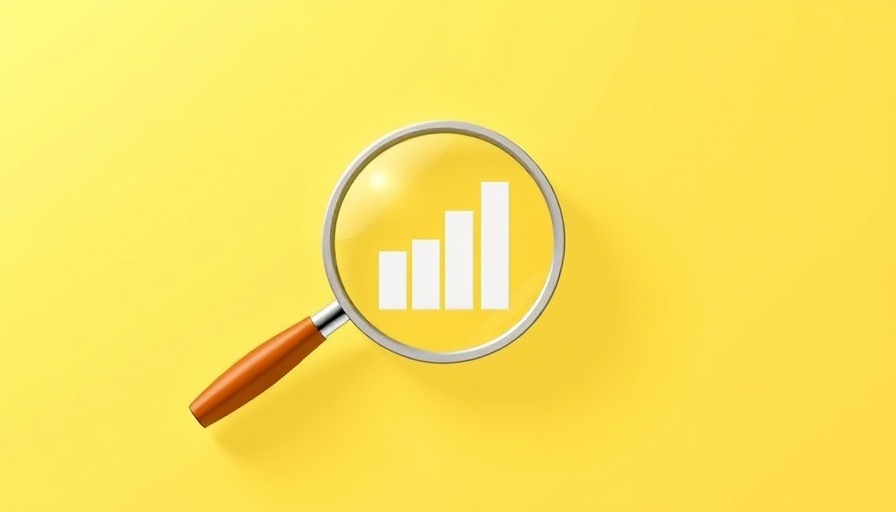
The Future of E-commerce PPC: Key Trends for 2026
The world of e-commerce pay-per-click (PPC) advertising is evolving at breakneck speed. The old days of simply placing a few ads and waiting for clicks are long gone. Instead, 2026 promises to bring innovative trends that will require adaptation and strategic planning from professionals, business owners, and marketers alike. Understanding these changes will be crucial for success in this fast-paced landscape.
1. Adopting AI-Powered Campaign Management
Artificial Intelligence (AI) is not just a buzzword in the marketing realm; it's becoming a core element of effective PPC strategies. By 2026, leveraging AI for campaign management will be essential. With the ability to analyze vast data sets in milliseconds, AI can predict customer behavior, automate bid adjustments, and optimize ads in real-time for maximum effectiveness. Tools like Performance Max and Smart Shopping will take precedence, enabling seamless multi-channel advertising while retaining the need for human oversight to align these strategies with business goals.
2. Leveraging First-Party Data
As privacy regulations tighten and third-party cookies fade, first-party data has become a goldmine for marketers. This data, sourced directly from customers, including their shopping habits and preferences, will allow brands to execute tailored PPC campaigns. Organizations must focus on collecting first-party data through personalized email campaigns and loyalty programs to create well-defined customer segments. In 2026, the businesses that strategize around first-party data will see a significant competitive advantage as they refine their targeting efforts.
3. The Rise of Video and Visual Search
Video is set to dominate online advertising in the upcoming years. Platforms like TikTok and YouTube will lead this charge, giving rise to short-form ads that capture viewers' attention quickly. Meanwhile, the emergence of visual search—where users can search for products using images—will also require e-commerce players to ensure their images are optimized rightly. Brands that embrace these channels and formats will better engage audiences and tap into new customer bases.
4. Merging Automation with Personalization
Interestingly, as automation technologies advance, so too does the demand for personalized advertising experiences. Dynamic Creative Optimization (DCO) will allow ads to adapt based on the viewer's interests and actions, ensuring that each individual receives content that resonates with them. Effective campaigns will require a mix of structured automation and tailored content to meet this evolving consumer expectation.
5. Omnichannel Attribution: Understanding the Customer Journey
With customers traversing multiple touchpoints before making a purchase, comprehending their journey is more crucial than ever. Advanced attribution tools are becoming indispensable in tracking how different channels contribute to conversions, enabling marketers to allocate budgets wisely. By 2026, brands that understand the interconnections of their marketing efforts will outperform those that rely on traditional last-click attribution models.
6. The Evolution of Voice Commerce
With the increasing adoption of voice-activated devices in homes, voice commerce is emerging as a valid channel. Consumers are beginning to search using natural language phrases, transforming how brands approach keyword strategies. Optimizing PPC campaigns for voice search will involve focusing on long-tail conversational keywords to capture this growing segment.
7. Sustainability and Values-Based Marketing
Finally, today's consumers are looking for authenticity in the brands they support. Integrating sustainability into PPC campaigns will become vital as consumers increasingly prioritize brands that align with their values. It's important for companies to showcase their ethics and sustainable practices in their advertising to build trust and loyalty among their customer base, particularly within younger demographics.
Preparing for E-commerce PPC in 2026
The outlook for e-commerce PPC strategies in 2026 is not just about keeping pace with technological shifts, but about weaving a narrative around values and consumer authenticity. Companies should begin auditing their current PPC setups against these anticipated trends, gathering first-party data, and testing out video content. The brands that stay curious, experiment with new approaches, and adapt quickly will be poised to thrive in this new e-commerce landscape.
Is your brand ready to evolve with these changes? The journey begins with understanding your customers and utilizing the tools at your disposal. With strategy and insight, your PPC efforts can lead the charge in the digital marketplace of 2026.
 Add Row
Add Row  Add
Add 




Write A Comment